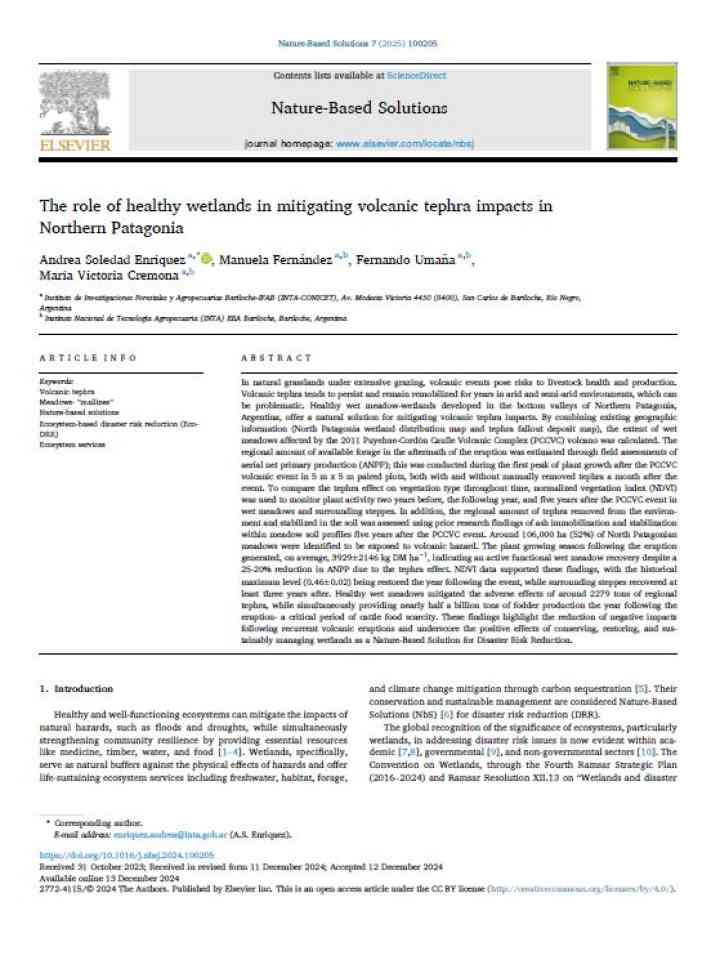The role of healthy wetlands in mitigating volcanic tephra impacts in Northern Patagonia
In this paper the extent of wet meadows affected by the 2011 Puyehue-Cordón Caulle Volcanic Complex (PCCVC) volcano was calculated. In natural grasslands under extensive grazing, volcanic events pose risks to livestock health and production. Volcanic tephra tends to persist and remain remobilized for years in arid and semi-arid environments, which can be problematic. Healthy wet meadow-wetlands developed in the bottom valleys of Northern Patagonia, Argentina, offer a natural solution for mitigating volcanic tephra impacts. The regional amount of available forage in the aftermath of the eruption was estimated through field assessments of aerial net primary production (ANPP); this was conducted during the first peak of plant growth after the PCCVC volcanic event in 5 m x 5 m paired plots, both with and without manually removed tephra a month after the event.
To compare the tephra effect on vegetation type throughout time, normalized vegetation index (NDVI) was used to monitor plant activity two years before, the following year, and five years after the PCCVC event in wet meadows and surrounding steppes. In addition, the regional amount of tephra removed from the environment and stabilized in the soil was assessed using prior research findings of ash immobilization and stabilization within meadow soil profiles five years after the PCCVC event. Around 106,000 ha (52%) of North Patagonian meadows were identified to be exposed to volcanic hazard. Healthy wet meadows mitigated the adverse effects of around 2279 tons of regional tephra, while simultaneously providing nearly half a billion tons of fodder production the year following the eruption- a critical period of cattle food scarcity. These findings highlight the reduction of negative impacts following recurrent volcanic eruptions and underscore the positive effects of conserving, restoring, and sustainably managing wetlands as a Nature-Based Solution for Disaster Risk Reduction.
Explore further
